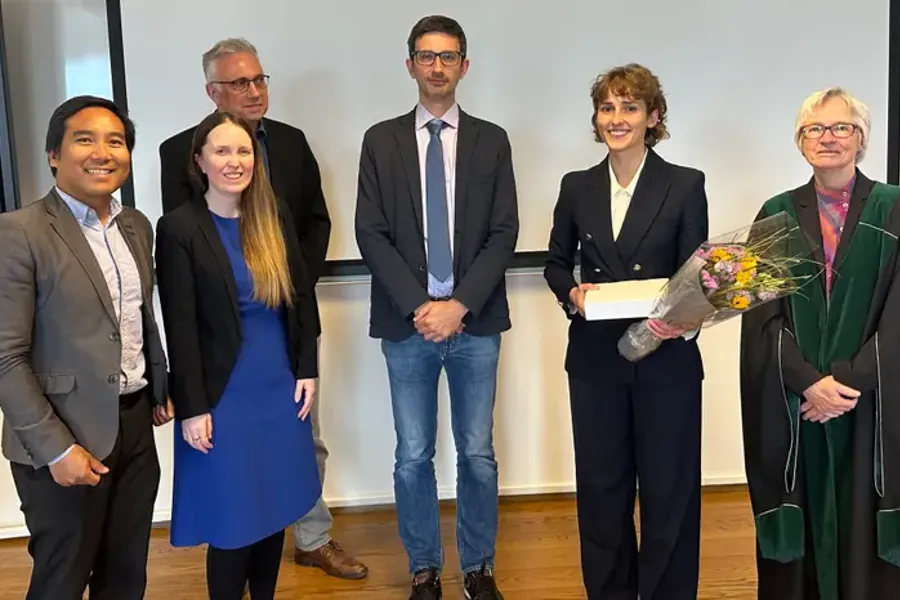Dissertation Lena Myklebust
On May 21st 2025, Lena Myklebust defended her thesis titled "Modeling the Electrophysiology and Mechanics of Ventricular Arrhythmia" for the degree of Philosophiae Doctor at the Department of Informatics, Faculty of Mathematics and Natural Sciences, University of Oslo (UiO). The trial lecture was titled "Methods in scientific computing and scientific machine learning to quantify uncertainties in precision medicine".

Photo: Private
Disputation: Lena Myklebust - Institutt for informatikk (UiO.no)
Adjudication committee
- First opponent: Dr., PhD Caroline Roney, University of London, UK
- Second opponent: Associate Professor Luca Dede, Politecnico di Milano, Italy
- Third member and chair of the evaluation committee: Professor Torbjørn Rognes, University of Oslo, Norway
Chair of defence
- Associate Professor Ellen Munthe-Kaas, Department of Informatics, University of Oslo
Supervisors
- Senior Research Scientist Hermenegild Arevalo, Simula Research Laboratory, Norway
- Professor Aslak Tveito, Simula Research Laboratory, Norway
Summary
Irregular heart beats can lead to a sudden stop in heart function and is an important cause of death worldwide. However, the disease mechanisms which lead to dangerous heart rhythms are often unclear. Therefore, improved methods for understanding and diagnosing heart rhythm disorders are needed.
One approach is to use computational methods to model the physics of the heart. Computer models can be used to calculate the electrical activity and movement of the heart, which determines the heart beat. By building these models from medical images, the risk of dangerous rhythms in individual patients may be predicted.
Through computational modeling, this thesis investigates how irregular heart rhythms may arise in patients with heart disease. Specifically, we look into irregular rhythms caused by tissue damage and abnormal movement. We also study and compare different computational approaches for predicting patient risk. Finally, we contribute to the development and validation of software which models the interaction between electrical activity and movement of the heart.